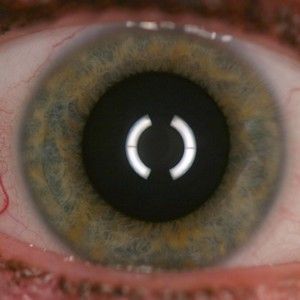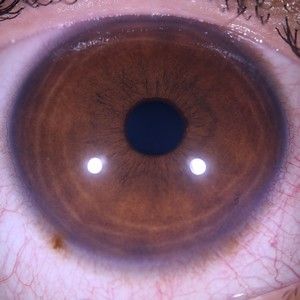Stress: Does It Show In Your Eyes?
Do some people have a “stress predisposition”?
by Judith Cobb, MH, CI3, NCP, NNCP, CCII3
DISCLAIMER
This article is not meant to diagnose nor prescribe. It is meant for educational purposes only. Judith Cobb, Cobblestone Health, and Nature's Sunshine Products accept no responsibility for results you get, whether good or bad, from using this information. Always seek the guidance of a qualified health professional.
How do we learn to handle stress?
Have you ever wondered why some people are more prone to stressing out than others? Does it hearken back to the ‘nurture or nature’ debate? I think it does.
We learn much of our behavior from our parents. I remember back to when my husband and I were newlyweds. We befriended another couple who had been living together and had just gotten engaged. One day we heard they had broken it off. We didn’t understand. My husband went to talk to the fellow to find out what had gone wrong and to offer support. The fellow said he’d gotten angry with his girlfriend, so he picked up the couch (yes, he was a strong, stocky fellow) and threw it at her. My husband asked why he would do such a thing – and the response was he’d seen his father do it. That husband of mine took a moment to explain to the fellow that throwing things at anyone, especially someone you say you love, is not an appropriate expression of anger. The fellow took the lesson to heart and was able to mend his relationship with his girlfriend. They were married a few weeks later.
Some people respond with complete composure. My brother works on a large family farm during harvest and calving. The hours are long, the weather doesn’t usually co-operate – and my brother used to be more than a bit of a hothead. The family who owns the farm is gentle, quiet, and good-natured. Things go wrong on farms. Machinery breaks down with inconvenient timing. Cows sometimes need help delivering calves at hideous times of the night. In this family, when inevitable horrendous things went wrong, whomever needed to resolve the issue would take a step back, think quietly, talk it over with someone and take action. Sometimes the solution was ‘nothing can be done until morning – let’s go into town to see a movie or go out for dinner’. My brother learned a lot by spending so much time with this lovely farming family.
Some of how we respond is nature. Some of it relates back to how well our bodies use nutrients and some of it goes back to behaviours that have been passed down in our DNA.
As you learn iridology you may see people giving iridology advice on social media saying things like "you've got chronic stress" or "you're under a lot of stress".
The fact of the matter is, we cannot tell if someone is under stress by looking at their irides. There are a few specific 'stress markers' that tell if a person is more likely to respond with a sympathetic nervous system reaction than not.
What that means is, when we see 'stress markers' we know a person has a tendency to over-react in stressful situations if they are not properly nourished. However, when these people are well-nourished, and when they learn stress-coping skills, they can handle stress calmly and with grace.
Stress Marker #1: Mydriatic Pupil

'When the pupil is enlarged in normal light, it is described as mydriasis. This often means the body is in fight or flight mode. The adrenals are at the ready to make a person take aggressive action. This can be a genetically inherited predisposition, an acquired disposition, or a momentary imbalance.
Interestingly, our pupils may also be enlarged due to dim lighting or viewing something we find pleasant, such as a loved one.
Stress Marker #2: Contraction Furrows
 Concentric sections of rings that look like ripples in sand or rings on a dart board suggest the owner spends a lot of time in the sympathetic nervous system response mode.
Concentric sections of rings that look like ripples in sand or rings on a dart board suggest the owner spends a lot of time in the sympathetic nervous system response mode.
Some styles of iridology call these nerve rings, cramp rings, or stress rings.
Being in the sympathetic response mode demands high amounts of B-vitamins, vitamin C, calcium, and magnesium.
This is an inherited indicator. The actual behavioral responses will be in part due to training, environment, and nutritional status.
Copyright © 2018 by Judith Cobb, Cobblestone Health Ltd. All rights reserved. Please respect the time it takes to write and publish articles. If you will link to this article and give proper attribution, you are encouraged to quote sections (though not the entire article).

